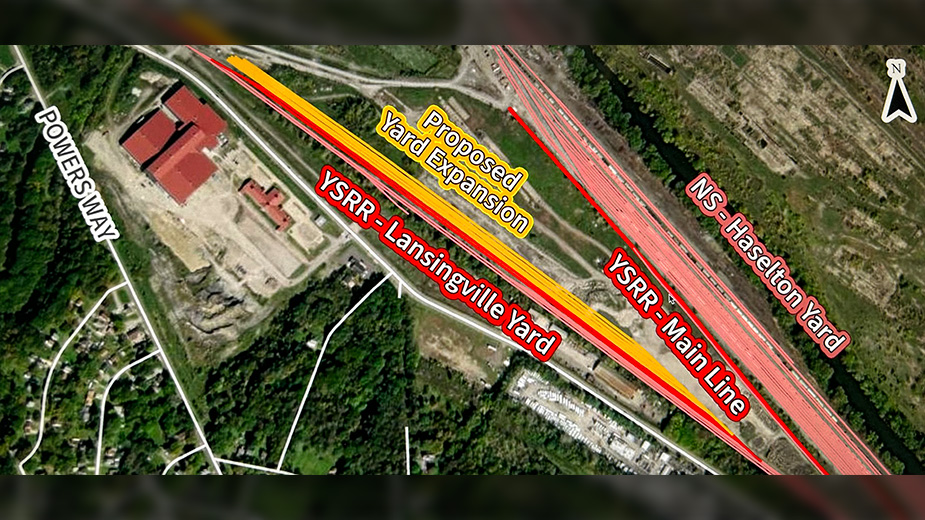Rail Commission OKs $2.9M Expansion by Youngstown & Southeastern
The Ohio Rail Development Commission approved a grant to cover about half the costs of a proposed $2.9 million expansion of Youngstown & Southeastern Railroad’s Lansingville Yard.
The commission and the railroad, a part of Midwest & Bluegrass Rail, would each contribute $1.46 million to the project, which will involve construction of a five-track yard with capacity for 220 cars and installation of approximately 15,000 feet of new track and six turnarounds, if the company moves ahead with the project.
“The whole Y&S Railroad handled 287 cars in 2020, and three weeks ago, we handled 232 with several weeks being close behind that. So it’s a good problem to have, but track investment is not cheap,” said Brendan Keener, vice president of commercial development and government affairs at Midwest & Bluegrass Rail.
The expansion “is a great example of a ‘but for’ project,” he said. “I don’t know if we could really pull off a project like this just by ourselves.”
The existing line was built as a trolley line to shuttle workers and managers in and out of the Mahoning Valley, Keener said. Over the past few years, the rail line has experienced business growth, both with traditional customers to transloads and online receivers, as well as storage and transit customers, primarily serving “a large petrochemical manufacturing facility just on the other side of the border,” along with other customers related to the Marcellus Shale industry.
“A lot of it is plastic pellet hoppers, and what we’ve noticed and experienced this year, as we’ve really seen that ramp up take off, is that our track and siding in interchange capacities for handling volumes in and out of our tracks is not sufficient,” he continued.
The longest siding on the whole railroad is 56 cars, and the line gets trains longer than that, including interchange cuts from its Class 1 partners, requiring spending the better part of a day taking portions of those trains and breaking them up on shorter available tracks, he said.
Having a yard to centralize storage and trains at the city operations, as well as to build and block trains more effectively, will improve service for customers, cut down transit times and “make things a little bit easier” for Class 1 customers “because we’ll be able to clear those interchange tracks more quickly if there’s cars coming back in the next day or even later that day,” Keener said.
Pictured at top: A map of the proposed Lansingville Yard expansion.
Copyright 2024 The Business Journal, Youngstown, Ohio.



